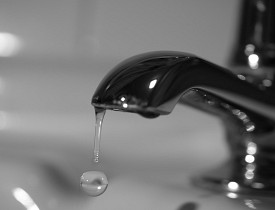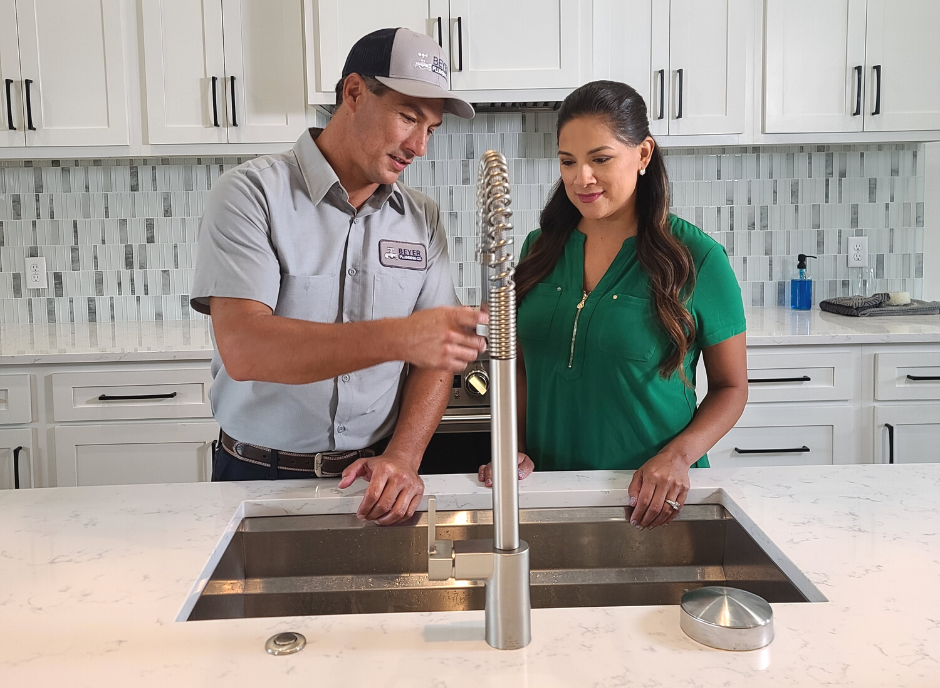Your Explanations Behind Repairing a Faulty Faucet
Your Explanations Behind Repairing a Faulty Faucet
Blog Article
This article below involving How to Fix a Dripping or Leaky Faucet is fairly informative. Don't bypass it.

Dripping faucets might look like a minor hassle, but their impact goes beyond simply the inconvenience of the audio. From drainage to sustaining unneeded monetary expenses and wellness dangers, overlooking a trickling faucet can result in various consequences. In this write-up, we'll delve into why it's vital to resolve this common house concern without delay and successfully.
Waste of Water
Environmental Influence
Leaking taps add considerably to water wastage. According to the Epa (EPA), a solitary faucet dripping at one drip per secondly can squander greater than 3,000 gallons of water annually. This not only stress water resources but additionally impacts communities and wildlife depending on them.
Step-by-Step Guide to Dealing With a Dripping Faucet
Devices Required
Prior to attempting to take care of a dripping tap, gather the essential tools, consisting of an adjustable wrench, screwdrivers, substitute parts (such as washing machines or cartridges), and plumber's tape.
Common Tap Issues and Their Solutions
Identify the kind of tap and the particular problem causing the drip. Typical troubles include damaged washers, corroded shutoff seats, or defective O-rings. Describe manufacturer directions or on-line tutorials for step-by-step assistance on fixings.
Financial Costs
Boosted Water Costs
Beyond the ecological influence, dripping faucets can blow up water bills significantly. The gathered wastage gradually equates right into higher utility costs, which can have been avoided with timely repair services.
Potential Building Damage
In addition, prolonged leaking can result in harm to components and surface areas bordering the faucet. Water accumulation can trigger discoloration, deterioration, and even structural problems if left ignored, causing extra fixing prices.
Health Issues
Mold And Mildew and Mold Development
The continuous existence of wetness from a leaking tap develops a perfect atmosphere for mold and mildew and mildew growth. These fungi not only compromise indoor air quality but also pose health risks, particularly for people with respiratory system problems or allergic reactions.
Waterborne Illness
Stationary water in leaking faucets can become a breeding place for microorganisms and various other microorganisms, enhancing the risk of waterborne diseases. Contaminants such as Legionella microorganisms flourish in stagnant water, possibly resulting in significant health problems when ingested or inhaled.
Do it yourself vs. Expert Repair service
Benefits and drawbacks of Do It Yourself Repair Work
While some may try to take care of a leaking tap themselves, do it yourself repair services come with their own collection of difficulties. Without proper expertise and tools, do it yourself efforts can worsen the issue or lead to insufficient repair work, extending the problem.
Advantages of Hiring a Specialist Plumber
Employing a specialist plumber makes sure that the underlying cause of the trickling faucet is addressed successfully. Plumbings possess the experience and devices to detect and repair tap problems successfully, saving time and decreasing the risk of additional damages.
Environmental Responsibility
Private Payment to Conservation
Taking obligation for dealing with leaking taps aligns with more comprehensive efforts towards water preservation and ecological sustainability. Every individual's activities jointly make a significant effect on maintaining precious resources.
Lasting Living Practices
By focusing on prompt repair services and taking on water-saving practices, people contribute to sustainable living techniques that profit both existing and future generations.
Preventive Measures
Regular Maintenance Tips
To avoid trickling taps, perform routine maintenance such as cleaning up aerators, evaluating for leakages, and replacing worn-out parts without delay. Additionally, consider setting up water-saving tools or updating to much more effective fixtures.
Value of Prompt Repairs
Attending to leaking faucets as soon as they're discovered avoids further water wastefulness and potential damages, inevitably conserving both water and money in the long run.
Effect On Home Value
Assumption of Well-Maintained Residential Property
Maintaining a property in good condition, consisting of attending to upkeep issues like leaking taps, enhances its perceived value and worth among potential customers or occupants.
Influence on Resale Worth
Characteristics with properly maintained plumbing components, consisting of taps, command higher resale values in the realty market. Addressing dripping faucets can contribute to a positive impact during home evaluations and settlements.
Conclusion
Resolving a trickling faucet goes beyond simple comfort; it's a necessary step towards saving water, decreasing financial prices, and protecting wellness and building. Whether with DIY repair work or expert support, taking action to deal with leaking taps is a small yet impactful means to promote liable stewardship of resources and add to a healthier, a lot more sustainable future.
How to Fix a Leaky Faucet: Step-by-Step Repair Guide
A leaky faucet may seem like a simple annoyance, but if it's not fixed promptly, that leak could cost hundreds to potentially thousands. From water damage to mold, mildew, and high water bills, even a tiny leak can be catastrophic if left unattended. Damage like this can even affect the overall value of your home, so it's important to take the right approach for leaky faucet repair. You may need the help of a plumber in some cases, but we've got a few tips you can try on how to fix a leaky faucet before calling the pros.
Four Faucet Types
When you're learning how to fix a leaky faucet, the first step is knowing what kind of faucet you're working with! There are four common types.
Cartridge Faucets
Cartridge faucets come in one- or two-handled varieties. In one-handled cartridge faucets, hot and cold water combines in a single cartridge. In the two-handled versions, hot and cold water are controlled separately and mixed in the faucet.
Ball Faucets
Ball faucets have a single lever you push up and down to adjust the pressure and rotate to change the temperature. A slotted metal ball controls the amount of water allowed into the spout.
Compression Washer Faucets
They're the oldest type of faucet, but they're still used in many homes — especially older ones. Compression faucets have two separate handles that, when turned, raise or lower the washer that seals a water valve. This valve stops water from flowing through the faucet when it is turned off.
Disc Faucets
Disc faucets rarely need to be repaired due to their maintenance-free design. The water flow is controlled by two discs — the upper one raises and lowers against a fixed lower disc, creating a watertight seal. If your disc faucet starts leaking, you may need to replace the seals or clean residue buildup from the inlets.
Fixing a Leaky Faucet
Step 1: Turn Off the Water
Whether you're learning how to fix a leaky bathtub faucet or how to fix a leaky kitchen faucet, always turn off the water supply to your working area when you're fixing a leak. The last thing you want is a flood added to your list of things to fix.
Look for the shutoff valves below your sink or around the tub and turn them clockwise to stop the water flow. If your faucet doesn't have shutoff valves, you may need to turn off the water for the whole house. Check to make sure it's off by turning the faucet on. If nothing comes out, you're ready to start the repair.
Step 2: Take Apart the Faucet
How you disassemble your faucet depends on the type of fixture you have. You can use a flathead screwdriver to remove the caps on top of the handle or handles for cartridge and compression faucets. Inside, you should see handle screws. Unscrew these with a screwdriver to remove the handle.
Disc- and ball-style faucets will typically have an inlet screw near the handle, and removing that will reveal the interior of the faucet.
Detach the Valve Stem
For cartridge- and compression-style faucets, you'll see the inner valve stem or cartridge once you remove the faucet handles. If you have a compression faucet, unscrew the brass valve stem. If you have a cartridge faucet, pull out the cartridge. If your cartridge has been in place for a while, it may require some tools or extra force to remove it due to mineral deposits.
Examine and Replace Parts
Once you've removed the parts, check them out to confirm what needs to be replaced. You may see corroded rubber washers, O-rings, stems, or cartridges. On a ball-style faucet, check the seats and springs for damage.
If you need to repair a leaky disc faucet, check the inlet and seals on the lower disc.
Once you determine what parts must be replaced, visit your local hardware store. Bring the damaged parts with you to ensure you can purchase the correct components to replace them.
Clean Valves and Faucet Cavity
If you've removed a stem or cartridge, you may notice mineral buildup in the faucet's threads. Use white vinegar to clean the valve seat by soaking it for a few minutes, then scrub it away with a soft toothbrush and rinse with warm water. You can also clean the interior of the faucet in the same way.
Reassemble the Faucet
Once your faucet is cleaned and the required parts have been replaced, it's time to reassemble it. Put the pieces back together and slowly turn the water supply back on. Doing this slowly is crucial because too much initial water pressure can damage the new hardware you've just installed.
https://homewarranty.firstam.com/blog/how-to-fix-leaky-faucet

I came across that article on How to Fix a Dripping or Leaky Faucet when doing a search on the web. Please set aside a second to share this blog if you liked it. Bless you for being here. Don't hesitate to stop by our website back soon.
Report this page